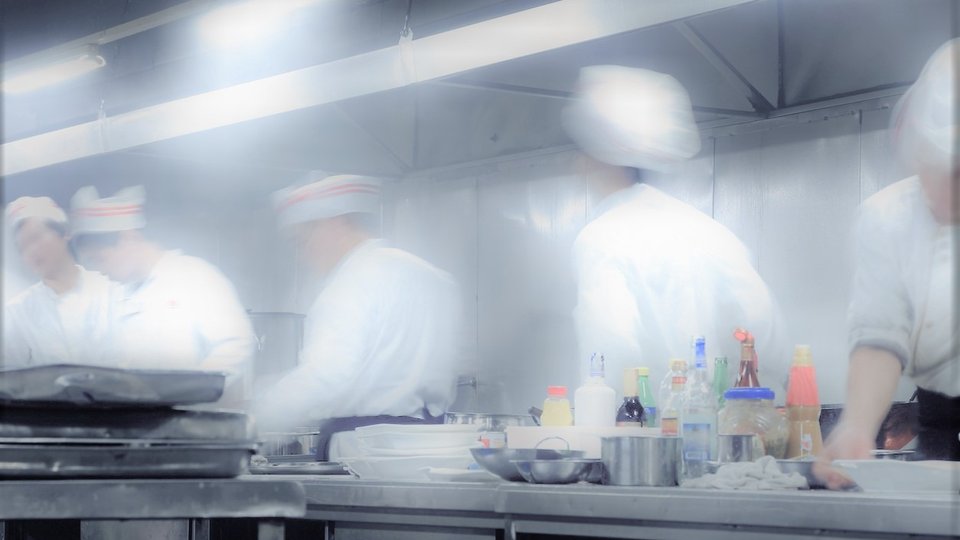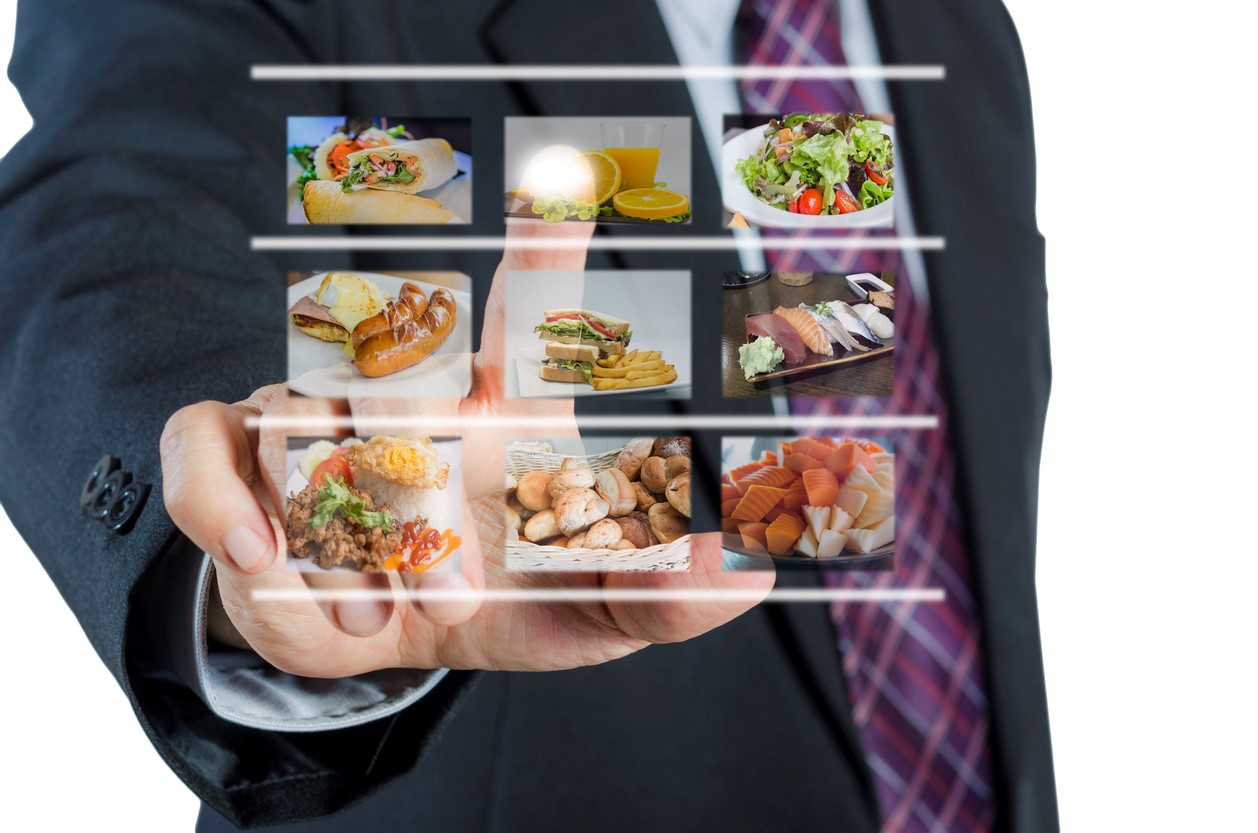Delivery
What's next for the ghost in the restaurant machine?
Whether you refer to delivery and/or pickup-only businesses as ghost, virtual, cloud kitchens or brands, the fact is they've moved into the restaurant landscape and are changing the way the entire industry operates. So what's ahead for these concepts and how will they affect the industry as a whole?

March 30, 2021 by S.A. Whitehead — Food Editor, Net World Media Group
The kind of evolution that restaurant business development is undergoing is a little like what happened to video production once everybody got camcorders and then smartphones: Increasingly, everybody's getting in the business. Just like video production has moved from being the sole domain of professional producers to that of anybody with the desire and a smartphone, creating a restaurant has moved from the day when you had to have a public storefront and the mounds of cash that go with it, to the far less complicated and costly requirements of a ghost kitchen and ghost franchise.
The result of that transition is a proliferation of brands that operate out of existing restaurant kitchens that can grow to scale literally overnight with the right money, people and supplies in place. After all, the potential pool of customers are also there virtually — ready, willing and waiting via third-party delivery apps. So even though — as the National Restaurant Association has reported — more than 100,0000 restaurants closed just last year with $240 billion in lost sales, those behind many ghost kitchens and franchises are making money.
Some of the big players in this arena are names like DoorDash, CloudKitchens, Bundl Technologies, SGE Entertainment and many more almost daily. In fact, by 2024, Technavio recently estimated the cloud kitchen market will grow to $1.18 billion. And even that tremendous growth rate is a bit of a flattening from the tremendous growth spurt in these types of brands since 2019, as Technavio said the forces placed upon the restaurant market by the pandemic ease.
But at the marketing firm, Zenreach, staff members have joined the many industry professionals who are closely watching how the whole ghost/virtual/cloud restaurant category is going to materialize as time marches on, particularly in the U.S. In fact, Zenreach CEO John Kelly is particularly high on these cloud-situated companies.
"Food delivery is one area that will probably level out to a new normal that is higher post-pandemic than pre-pandemic, and that bodes well for ghost kitchens," he told QSRweb recently.
Granted Kelly has a dog in this whole restaurant game since Zenreach software is used by restaurants to give customers Wi-Fi access that creates user profiles, tracks visits and delivers ads. But all the more reason for him to be watching the development of the whole ghost category very closely, as he readily admits he has been. And as a result, he has developed some very keen impressions about where the category is headed.
We started off our interview with a question that would help ensure everybody reading was on the same page about the semantics of the ghost restaurant realm.
Q: Just to establish a baseline regarding these terms, can you first delineate the difference between a ghost kitchen brand and ghost franchise?
A: A ghost kitchen is a supplemental prep facility set up by established brick-and-mortar restaurants to cater exclusively to delivery and takeout customers. This model has grown to become incredibly popular for eateries with limited or no indoor seating seeking to make it through the pandemic. Now, there are ghost franchises, too — entire brands specifically developed under a delivery-only business model that can be packaged for franchisees and set up anywhere in the country.
Q: How prevalent is this business model now and where's it headed from the data you've reviewed?
A: The ghost kitchen model has absolutely exploded in the last year, seeing triple-digit growth that could lead it to develop into a trillion-dollar industry by 2030. Food delivery is one area that will probably level out to a new normal that is higher post-pandemic than pre-pandemic, and that bodes well for ghost kitchens. Good quality food, ready for delivery without the costs of the traditional restaurant will have certain appeal to both restaurateur and consumer alike.
Q: From the point-of-view of the restaurant owner/operator, what do you see as the key benefits and drawbacks with this business model?
A: For restaurant owners and managers, it's easy to see the appeal of ghost kitchens. Opening a brick-and-mortar restaurant involves massive upfront risks and costs: Typically, an operator has to sign a multi-year lease, hire full front- and back-of-house teams and invest in additional construction or remodeling.
Ghost kitchens, on the other hand, reduce the costs of real estate, labor and menu innovation by shifting resources to focus exclusively on off-premise sales channels. Furthermore, the ghost kitchen model obviates the need for customer-facing staff, such as servers, expeditors, bussers, etc. In essence, ghost kitchens strip food preparation down to its leanest, most necessary elements.
Of course, there are drawbacks to the model as well. Restaurants lose the opportunity to make a lasting impression on guests by "wowing" them with an incredible dine-in experience. They also lose the ability to upsell on items like alcohol, appetizers and desserts. And they cannot offer guests the full benefits of the dine-in experience.
Q: Alright then, let's look at this from the all-important consumer point-of-view as far as what customers will most like and dislike about these types of restaurants?
A: One advantage of the ghost kitchen model for customers is that the relative ease of setting one up has resulted in an abundance of concepts, which means more options for consumers. Additionally, the money saved by the restaurant operator on overhead and other operational costs could, in theory, be passed on to the consumer.
A key disadvantage for customers, as I alluded to earlier, is that they miss out on the experience that dining in at a full-service restaurant provides.
Q: If ghost franchises become as much of a force in the restaurant industry, what do you feel will be the net effect industrywide?
A:As with most industries, big brand restaurants have certain advantages over independent restaurateurs (name recognition and trust being key one(s)). … Those same advantages can certainly apply to ghost kitchens, since diners are more likely to choose from names they recognize and trust. At the same time, the low cost and relative ease of setting up a ghost kitchen means that the barrier for entry is lower for new and smaller restaurants as well.
Q: Lastly, do you think the consumer runs this risk of getting confused and/or disheartened by the rapid proliferation of ghost brands, along with the tendency for them to appear and disappear literally overnight?
A:As long as the ghost kitchen is operating under the same brand as the owner, I do not think there will be consumer confusion; the consumer is getting their food delivered by the brand. If the restaurateur is creating a sub-brand, that might result in confusion. But, that risk is probably low if done correctly. Small, independent restaurants have always come and gone — it is one of the highest-turnover industries — and consumers recognize that.
Inset photo: iStock
About S.A. Whitehead
Pizza Marketplace and QSRweb editor Shelly Whitehead is a former newspaper and TV reporter with an affinity for telling stories about the people and innovative thinking behind great brands.




